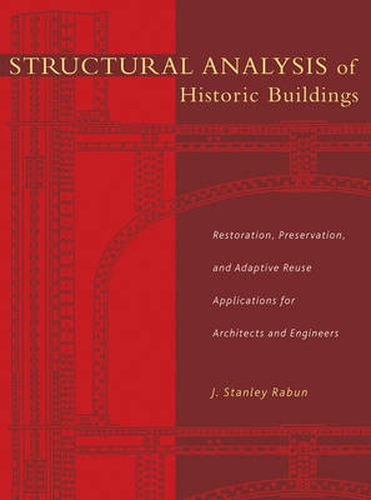Readings Newsletter
Become a Readings Member to make your shopping experience even easier.
Sign in or sign up for free!
You’re not far away from qualifying for FREE standard shipping within Australia
You’ve qualified for FREE standard shipping within Australia
The cart is loading…






Structural Analysis of Historic Buildings offers the most’ complete, detailed, and authentic data available on the materials, calculation methods, and design techniques used by architects and engineers of the nineteenth and early twentieth centuries. It provides today’s building professionals with information needed to analyze, modify, and certify historic buildings for modern use. Among the many important features of this book not available in any other single volume are: More than 350 line drawings and diagrams taken directly from original sources such as the Carnegie Steele Company’s Pocket Companion (1893) and Frank Kidder’s The Architect’s and Builder’s Pocketbook (1902) Hard-to-find data on period structural components, such as cast-iron columns and beams, wrought-iron columns and beams, and fireproof terra cotta floor arches Methods for determining what kind of loads structural components were originally designed to bear and methods to determine if they are still capable of performing as intended Extensive coverage of historical foundation systems and empirical design methods for load-bearing masonry buildings For any building professional involved in the rapidly growing field of restoring, preserving, and adapting historic buildings, Structural Analysis of Historic Buildings is an invaluable structural handbook.
$9.00 standard shipping within Australia
FREE standard shipping within Australia for orders over $100.00
Express & International shipping calculated at checkout
Structural Analysis of Historic Buildings offers the most’ complete, detailed, and authentic data available on the materials, calculation methods, and design techniques used by architects and engineers of the nineteenth and early twentieth centuries. It provides today’s building professionals with information needed to analyze, modify, and certify historic buildings for modern use. Among the many important features of this book not available in any other single volume are: More than 350 line drawings and diagrams taken directly from original sources such as the Carnegie Steele Company’s Pocket Companion (1893) and Frank Kidder’s The Architect’s and Builder’s Pocketbook (1902) Hard-to-find data on period structural components, such as cast-iron columns and beams, wrought-iron columns and beams, and fireproof terra cotta floor arches Methods for determining what kind of loads structural components were originally designed to bear and methods to determine if they are still capable of performing as intended Extensive coverage of historical foundation systems and empirical design methods for load-bearing masonry buildings For any building professional involved in the rapidly growing field of restoring, preserving, and adapting historic buildings, Structural Analysis of Historic Buildings is an invaluable structural handbook.